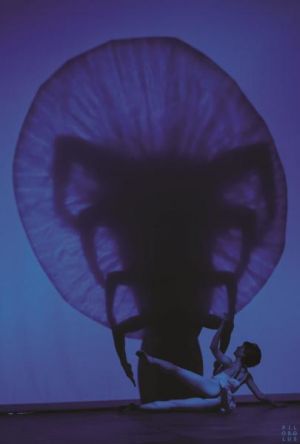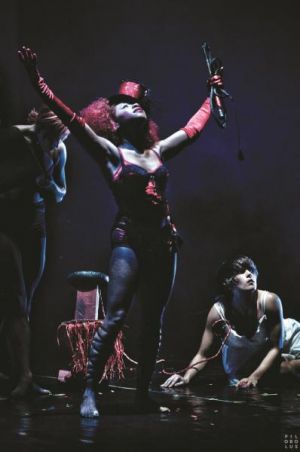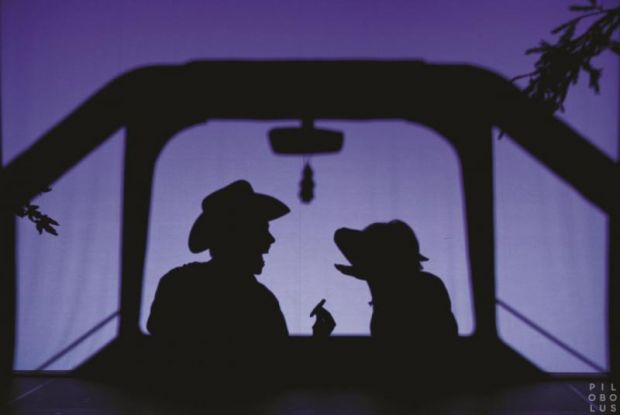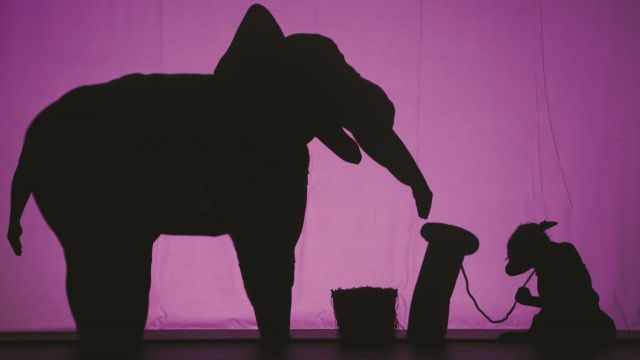A Spotlight On Shadows
Unique dance company Pilobolus has perfected the art of creative shadow storytelling. On the eve of their Australian tour with the acclaimed Shadowland, two of the company’s directors took time to answer questions from Coral Drouyn.
Few of us didn’t, at some time in our childhood, make shadow images on a bed sheet with the aid of a torch for our friends’ amusement. It’s a far cry from the hi-tech and sophisticated art of Pilobolus, about to tour nationally with their amazing shadow piece Shadowland.
Shadowland incorporates choreography, original music by David Poe, shadow creations and the story of a teenage girl yearning for adolescent freedom who explores the world beyond her shadow. Seen by over half a million people worldwide, it’s not unusual to hear audible gasps of disbelief from the audience.
So how exactly does the multi award winning Pilobolus create this theatrical magic? I truly don’t know – and if I did know I wouldn’t tell you. Magic ceases to enthral once you know how it’s done. We can know what it isn’t - it isn’t pre-filmed; or CGI or special effects, unless you count the astonishing use of human bodies as a special effect. It’s real and visceral and unfolds as we see it.
 As for how…well the company is protective of what it has developed, and understandably so. There are, however, some clues from Shane Mongar, Director of Productions, and Itomar Kubovy, the Executive Producer.
As for how…well the company is protective of what it has developed, and understandably so. There are, however, some clues from Shane Mongar, Director of Productions, and Itomar Kubovy, the Executive Producer.
I asked how the company worked in creating the shadow craft, rather than purely dance choreography, and at what stage the technical elements of lighting became integral?
“Pilobolus was never a ‘pure’ dance company,” Itomar explained. “Since 1971, when the company was founded by a group of non-dancers at Dartmouth College in New Hampshire, the company has developed an idiosyncratic movement style that arose out of curiosity about the human bodies and how they could be combined to share weight to create sequences of composite images with arresting visual impact. We first experimented with shadow work in 2006, 35 years after the company was founded, but our approach has been consistent since the very beginning - combining bodies and sharing weight in the service of composite imagery.”
“Tech was involved throughout the development of Shadowland,” Shane added. “Our designers are always a part of our creative process and collaborate with the creative team early in the creative process. Our creative team will often bounce ideas off of the designers, working together in true collaboration moving the artistic vision forward.”
So it would seem that the process is organic, ideas can come from anywhere and then the process is to experiment with physical form in workshop development and see what works and what doesn’t?
“We always begin with a generation of visual material and imagery,” Itomar elaborated. “We believe this allows the associative creative impulses of the group to generate material most efficiently. As we grow our buckets of material we start to see patterns of theme, and subject matter emerges. Our storytelling, then, results from attempts to wrap a narrative around our library of images and visual sequences.
 “Creating shadow work has similar physical demands to the other choreographic and physical work we create. In addition there are many delicate techniques to shadow-casting and rules that are quite different from work in front of a screen. Optics, puppetry, concealment, physical control, group-think, and the ability to do many things at once, take dancers months and months to learn.”
“Creating shadow work has similar physical demands to the other choreographic and physical work we create. In addition there are many delicate techniques to shadow-casting and rules that are quite different from work in front of a screen. Optics, puppetry, concealment, physical control, group-think, and the ability to do many things at once, take dancers months and months to learn.”
Ultimately, I suggest, it all comes down to the lighting, the main source. How is that controlled?
“We cannot comment on the main light source,” Shane responded warily. “However, it is there from the beginning. We also use other light sources to create the shadow work. We have custom-made “hand held” lights … this allows the technology to work with the dancers in achieving a variety of unique shadows. These mobile lights also work in helping us create distance and perspective. But apart from them we don’t travel with any lighting rig of our own. Instead we give a strict and detailed lighting plot requirement list to the promoters and if a venue is unable to supply our needs we regretfully say no rather than compromise the show.”
As Alice would say (Shadowland is not dissimilar to Alice in Wonderland) “curiouser and curiouser.” One thing is certain; Australia has never seen anything quite like Shadowland. Itomar sums it up perfectly.
“Shadowland is unlike any other show I have seen - an Alice in Wonderland tale about the coming of age of a young girl through a surreal night of her dreams. Part circus, part dance, part theatre, part rock show, we trust Shadowland will leave Australian audiences amazed. Plus there’s a surprise ending that we are only performing in Australia. We can’t wait!!!”
Neither can we.
Tour details: Arts Centre Melbourne, State Theatre (May 28 – June 1); The Civic Theatre, Auckland, NZ (June 3 – 8); The Playhouse, QPAC, Brisbane (June 10 – 15); State Theatre, Sydney (June 17 – 20); The Canberra Theatre (June 21 & 22); The Regal Theatre, Perth (June 25 – July 6) and Her Majesty’s Theatre, Adelaide (July 9 – 12).

Subscribe to Stage Whispers for a chance to win tickets to Shadowland
Subscribe to our E-Newsletter, buy our latest print edition or find a Performing Arts book at Book Nook.

